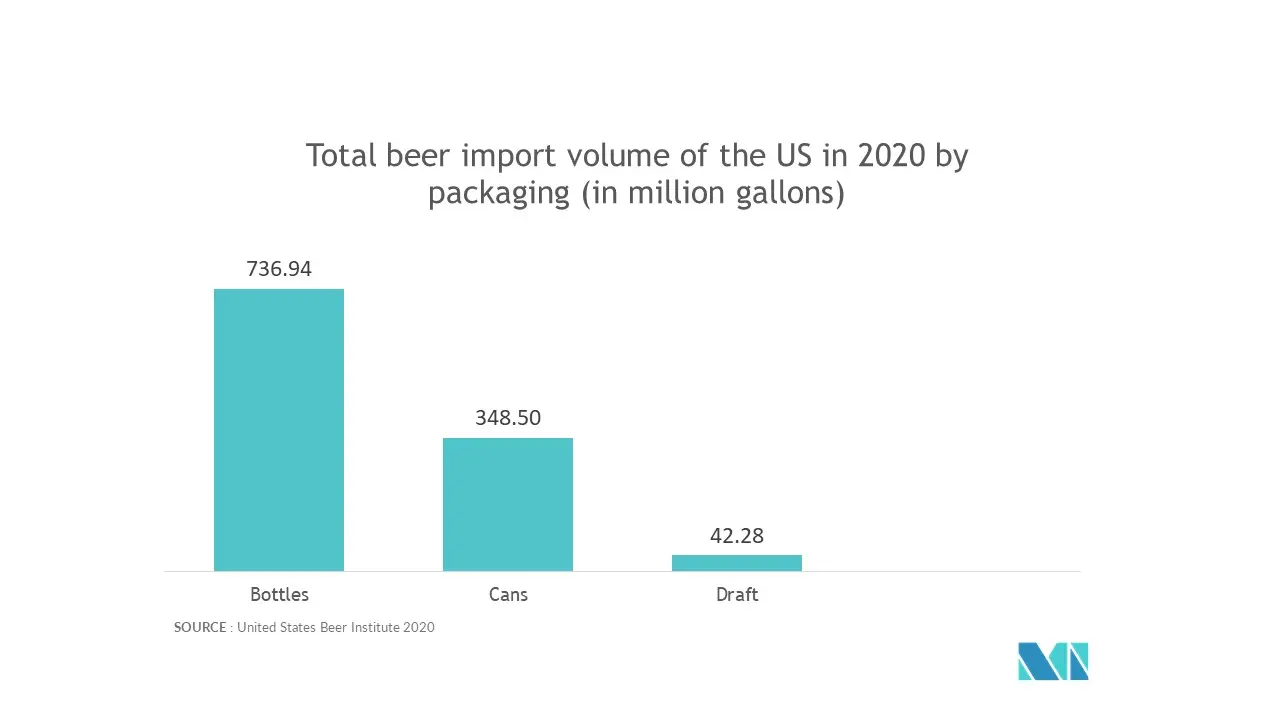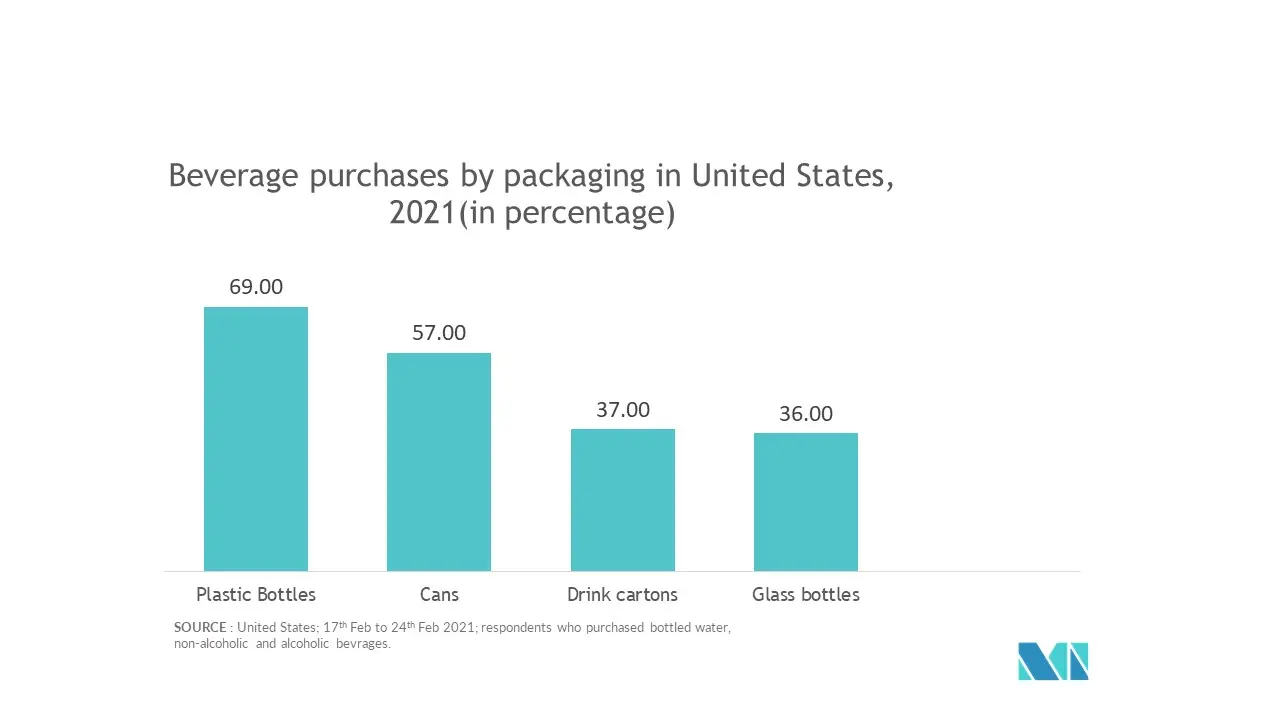Market Trends of US Beverage Packaging Industry
This section covers the major market trends shaping the US Beverage Packaging Market according to our research experts:
Alcohol Beverages to hold significant market share
The categorization of alcoholic beverages includes wine, beer, spirits, etc., being packaged using formats such as bottles, kegs, cartons, and cans, to name a few.
- When it comes to Alcoholic beverages, there has been a significant transitioning of the wine industry concerning packaging format has been observed, as the global consumption across still wine has been slowing down. This has led the Unites States-based wineries to drive packaging innovations to cut costs and appeal to younger consumers.
- On the other hand, Beer's packaging is highly diverse; the formats packaging type preference has been driven by different regions where local laws, regulations, tastes, culture, and other drivers influence the packaging landscape.
- The draft beer sales stopped flowing in the United States due to on-premise shutdowns caused by efforts in the wake of novel coronavirus disease COVID-19. Therefore, allied craft brewers turned to 32 oz. Cans filled and sealed on demand to sell out leftover beer in kegs before oxidization. This has led to an increased demand for packaging towards current production in hand. Amidst the lockdown scenarios, packaging manufacturers have themselves reported operability with a reduced workforce, creating a supply-driven challenge.
- Changes in packaging materials, smaller sizes, and sustainability have all contributed significantly to changes in packaging development. Canned and boxed spirits are still in development as new forms of alcoholic beverages face challenges such as consumer acceptance, shelf life constraints, and lack of canning partners.
- Alcohol companies are adopting green production methods as when it comes to carbon footprint creation, the largest contribution of CO2 actually comes from the production and transportation of vials. In fact, these two components of the supply chain can account for 51% to 68% of a wine product's carbon footprint.

Metal Packaging holds high demand in beverages
Beverages demand home consumption, and grocery is increased compared to restaurants. Many prominent market players have announced investments to set up new manufacturing infrastructures to fulfill the increased demand.
- One of the biggest benefits of metal packaging is that they are highly recyclable. Metal packaging can be recycled at the end of their lifecycle without its quality degradation, and which makes metal packaging the preferred packaging type for brands across various beverage companies, ahead of other materials, such as plastic and bottle. Nearly 100% of the aluminum used in the cans can be melted down and used again.
- Further, the United States is witnessing several new aluminum can production facilities catering to various beverage needs in the country. For instance, in September 2021, Canpack, a can manufacturer, began constructing a new aluminum can factory in eastern Indiana and is expected to produce approximately 3.6 billion cans per year. The Canpack is a subsidiary of the Polish company Giorgi Global and the factory is expected to employ approximately 340 people in the long run.
- The Aluminum Association, Washington stated that plastic contamination in the recycling stream is driven mainly by increased use of plastic labels, shrink sleeves, and similar products, which can cause operational and even safety issues for recyclers. In September 2020, the Aluminum Association released an aluminum container design guide to further address some of these challenges and recommend solutions to beverage companies. Such solutions to address the challenges and instances of replacing plastic and glass drive the demand for aluminum cans in the market.
- Further, the average aluminum can produced in the United States contains approximately 73% recycled content, compared to 23% for glass bottles and less than 6% for plastic. Furthermore, aluminum can scrap more beneficial than glass or plastic, making aluminum a vital driver of the financial viability of the United States' recycling system.
- However, as people become more aware of the environmental impact of plastic, they are increasingly opting to buy beverages in cans rather than bottles. Additionally, Budweiser -an American beer company, started packaging icons to showcase its commitment to sustainability. The new 100% Renewable Energy logo on Budweiser packaging is a way for the brand to tell consumers the beer is made in breweries powered by renewable energy.


